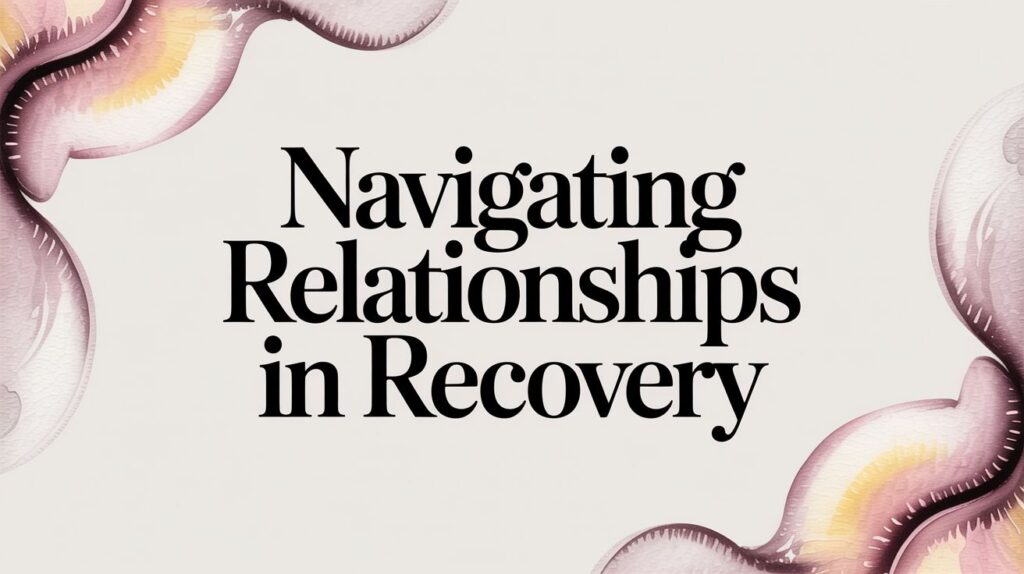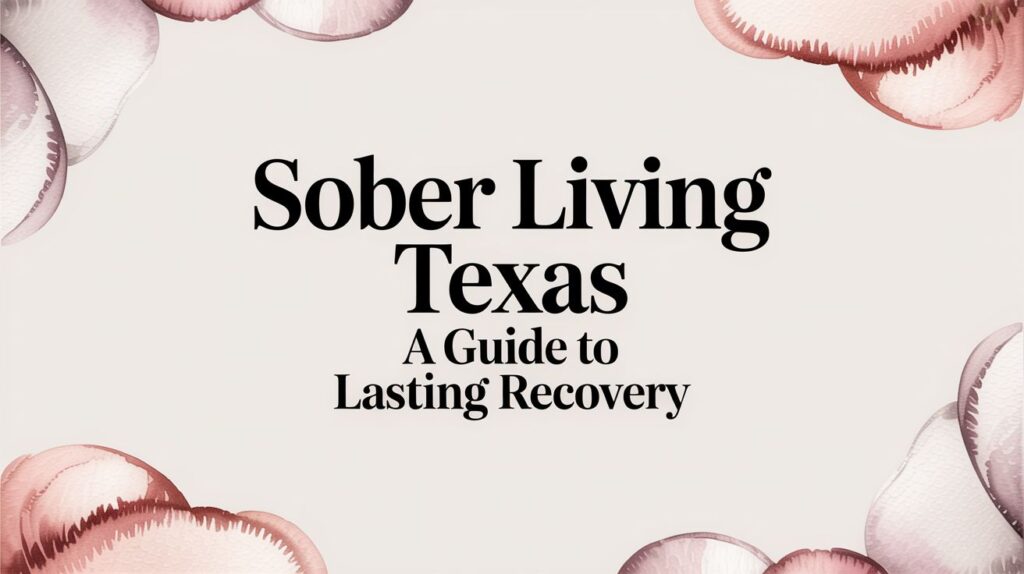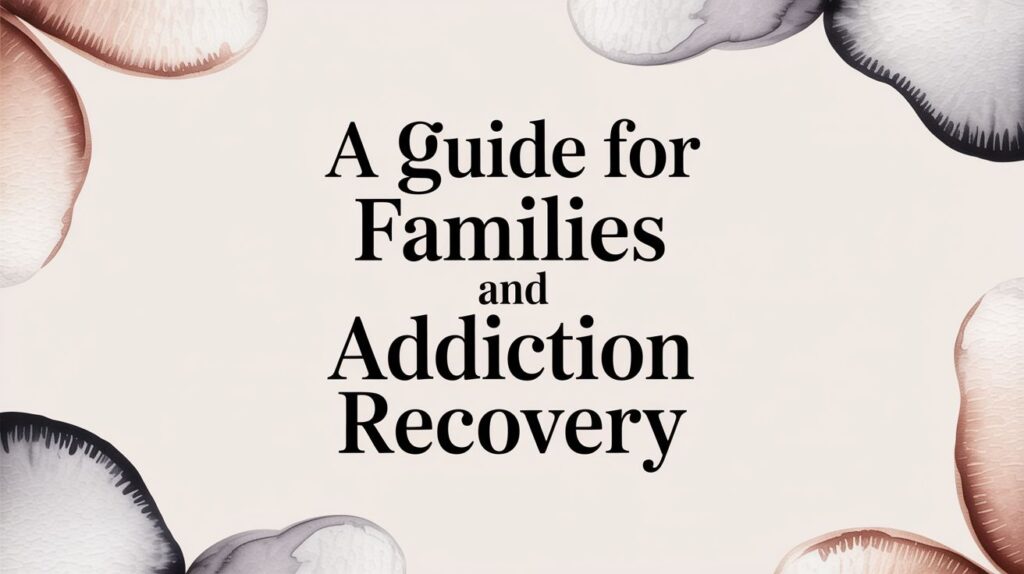The Fourth Step of a 12-step program, "Made a searching and fearless moral inventory of ourselves," is a pivotal moment in recovery. It’s where you turn inward to honestly examine the behaviors and patterns that have contributed to addiction and personal struggle. While crucial, this step can feel overwhelming and abstract, leaving many wondering where to even begin. You are not alone in this; the process requires courage, but also a clear roadmap.
This guide is designed to provide that clarity. We will move beyond theory and present a collection of detailed 4th step inventory examples that bring the process to life. Each example offers a practical template and a strategic breakdown, demonstrating how to identify resentments, dissect fears, and understand your part in complex situations.
Instead of a daunting task, you'll find a structured, manageable, and profoundly healing exercise. We'll explore inventories focused on everything from financial fears to family resentments and professional conflicts. Our goal is to equip you with actionable insights and replicable methods to conduct your own inventory effectively. This isn't just about cataloging past wrongs; it’s a direct path to uncovering the freedom that comes from rigorous self-honesty and understanding.
1. Fear-Based Resentments and Relationships
A significant portion of any 4th Step inventory involves untangling resentments, which are often deeply intertwined with fear. This category focuses on interpersonal relationships where underlying fears, such as abandonment, rejection, or loss of control, have festered into anger and resentment. This is a foundational area to explore because these relationship-based resentments often dictate how we interact with the world and can be major drivers of addiction.
The process requires a "fearless and searching" look at the people, institutions, or principles we are angry with. Instead of just listing grievances, the goal is to pinpoint the specific actions that caused harm and, most importantly, identify the parts of our self-esteem, security, or personal relations that were affected. This approach shifts the focus from blaming others to understanding our own emotional reactions, a crucial step in personal growth.
Strategic Breakdown
Many people find that their most potent resentments stem from childhood or formative relationships. For example, a resentment toward a parent for perceived emotional neglect isn't just about past events; it's about how that neglect installed a deep-seated fear of abandonment that now surfaces in adult relationships, from romantic partnerships to workplace dynamics.
- Who Caused Harm: This column lists the specific person, like an "Ex-Spouse" or a "Former Boss."
- The Cause (What They Did): Detail the specific action. Instead of "He was a jerk," write "He had an affair and ended our marriage without discussion."
- How It Affected Me: This is the core of the work. Identify the emotional impact and the fear. For the ex-spouse example, this might be: "Affected my security (financial instability), self-esteem (felt unlovable), and personal relationships (unable to trust new partners)." The underlying fear is one of betrayal and abandonment.
Visualizing the Process
To break down this process effectively, many use a simple, three-column structure to connect the person to the action and then to the resulting emotional impact. This visual flow helps clarify how a specific harm triggered a specific fear. The following infographic illustrates this foundational workflow for dissecting a single resentment, which is one of the most vital 4th step inventory examples you can practice.
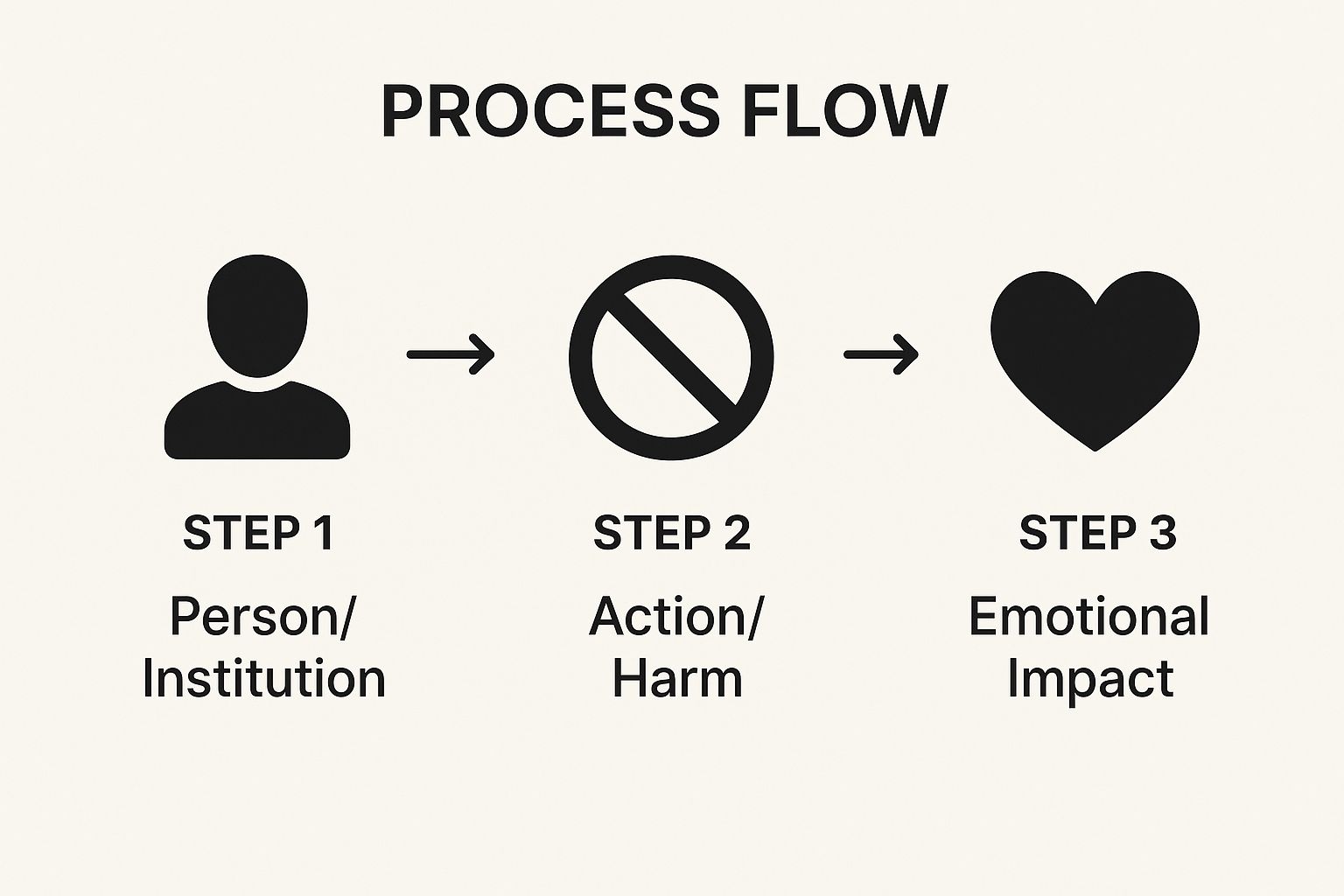
This simple, linear process helps untangle complex emotions by forcing a clear, logical examination of the resentment from its source to its effect on you.
Actionable Takeaways
When tackling fear-based resentments, remember to be brutally honest and specific.
- Be Incident-Specific: Focus on concrete events, not general character traits. "My boss criticized my project in front of the team" is more useful than "My boss is a micromanager."
- Uncover the Fear: For each resentment, ask yourself, "What was I afraid of?" Fear of failure? Fear of looking stupid? Fear of being alone? This is where the real insight lies.
- Look for Patterns: As you list resentments, notice if the same fears (like rejection or control) and affected areas of self (like pride or security) appear repeatedly across different relationships. This highlights your core character defects.
2. Financial Fears and Security Issues
Another critical area of a 4th Step inventory revolves around money, material possessions, and financial security. This category explores how our relationship with finances drives fear, resentment, and harmful behaviors. It includes resentments toward others over financial matters, deep-seated fears of poverty or inadequacy, and an honest look at how financial stress has damaged our self-worth and relationships, often fueling addiction.

The inventory process here involves listing specific financial fears and resentments and then dissecting them to understand the underlying emotional drivers. The goal is to move beyond blaming external circumstances (a bad economy, an unfair boss) and identify our own patterns of financial self-sabotage, greed, or insecurity. For many, financial instability and substance use are deeply linked, making this one of the most practical 4th step inventory examples for building a stable recovery.
Strategic Breakdown
Financial fears often originate from family history and cultural messages about money and success. For instance, resentment toward a family member over an inheritance dispute isn't just about the money; it can trigger profound fears of being devalued or left behind. Similarly, chronic overspending might be driven by a fear of not appearing successful, affecting one's pride and self-esteem.
- The Fear/Resentment: Start by naming the specific issue. This could be a person, like "Family Member," or a concept, like "Fear of Poverty."
- The Cause (What Happened or What I Fear): Detail the specific situation. Instead of "I'm bad with money," write "Constantly took out high-interest loans despite having a stable income, causing massive debt."
- How It Affected Me: Unpack the emotional consequences and the part of the self impacted. For the debt example, this could be: "Affected my security (constant threat of collectors), self-esteem (felt irresponsible and ashamed), and personal relationships (lied to my partner about our finances)." The root is a fear of inadequacy.
Visualizing the Process
Using a multi-column chart helps untangle the complex web of financial fears and their real-world consequences. This structure allows for a clear examination of the fear itself, the behaviors it drives, and the parts of your life it damages. This visual breakdown clarifies how abstract fears manifest as concrete, harmful actions, providing a roadmap for change.
This method transforms a vague sense of financial anxiety into a clear inventory of specific fears, actions, and impacts, making them manageable and addressable.
Actionable Takeaways
When inventorying your financial fears, honesty and a willingness to see your part are paramount.
- Identify Your Financial "Character": Are you a compulsive spender, a hoarder, an underearner, or someone who uses money to control others? Be honest about your role.
- Examine Both Sides: Look at fears of having too little (poverty, insecurity) and fears related to having wealth (losing it, being taken advantage of).
- Connect to Addiction: Note how financial stress may have triggered substance use or how addiction created financial wreckage. Understanding this link is crucial, especially in cases where integrated treatment is needed. Finding effective dual-diagnosis treatment programs can be essential when financial anxiety and addiction are intertwined.
- Look for Inherited Beliefs: Consider the messages you received about money from your family. Did they teach you that your worth is tied to your bank account? These inherited beliefs often drive our financial defects.
3. Sexual Conduct and Intimacy Fears
Another critical area of a 4th Step inventory involves a searching and fearless moral inventory of our sexual conduct. This section is not about shaming past behaviors but about understanding how our character defects, insecurities, and fears have manifested in our intimate lives, often causing harm to ourselves and others. It examines patterns in relationships, sexual behavior, and the underlying fears that drive them, such as the fear of intimacy or abandonment.
This process requires looking honestly at where we may have been selfish, dishonest, or inconsiderate. The goal is to identify patterns of harm and the fears that fuel them. By doing so, we can move toward healthier, more honest, and spiritually sound relationships. This part of the inventory is essential for healing deep-seated wounds that often contribute to addictive cycles.
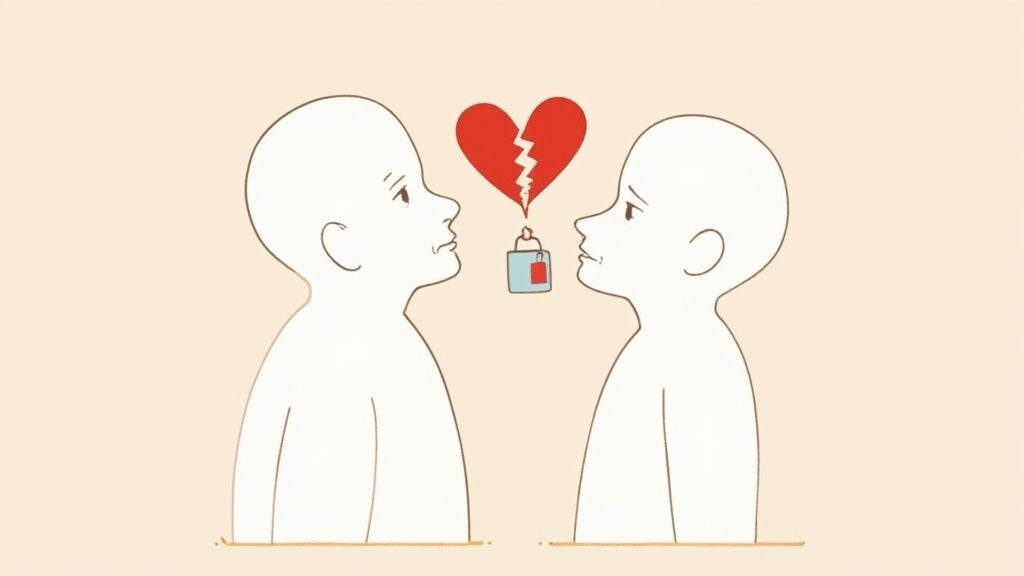
Strategic Breakdown
Many find this part of the inventory challenging due to shame or guilt. The key is to approach it with a spirit of inquiry, not judgment. For instance, an affair is not just a single act of betrayal; it's often a symptom of deeper issues like fear of emotional intimacy, selfishness, or a need for outside validation. The inventory aims to uncover these root causes.
- Whom Did I Harm: List the specific person, such as a "Spouse," "Former Partner," or even "Myself."
- The Cause (What I Did): Describe the specific conduct clearly. Instead of a vague entry like "I was unfaithful," a more effective inventory would state, "I engaged in a long-term affair, deceiving my spouse and family."
- What Was My Motive/Defect: This is where self-examination is crucial. For the affair example, the motives might be: "Selfishness (I put my desires first), Dishonesty (I lied to protect myself), Fear (I was afraid of confronting problems in my marriage), and Pride (I sought validation from another person)."
Visualizing the Process
The structure for this inventory often involves a four-column format that links the person harmed to the action, the underlying character defect, and the specific harm caused. This method provides a clear and organized way to analyze complex and emotionally charged histories, making it one of the most revealing 4th step inventory examples to work through. The columns help to systematically trace behavior back to its root defect.
This structured approach prevents the inventory from becoming a simple list of regrets. Instead, it transforms it into a powerful tool for identifying the precise character defects that need to be addressed to foster healthier future relationships.
Actionable Takeaways
When inventorying your sexual conduct and intimacy fears, honesty and thoroughness are paramount.
- Focus on Patterns: Look beyond individual incidents. Do you repeatedly seek out unavailable partners? Do you use sex to avoid emotional intimacy? Identifying these patterns is the primary objective.
- Include Emotional Harm: This inventory isn't just about physical acts. Consider times when you were emotionally unavailable, manipulative, or dishonest within an intimate relationship.
- Identify the Underlying Fear: Ask yourself what fear drove the behavior. Was it fear of being alone? Fear of being seen for who you truly are? Fear of rejection? Uncovering these fears is key to lasting change.
- Work with a Guide: It is strongly recommended to work through this section with a trusted sponsor or counselor, often of the same gender, to ensure a safe and objective perspective.
4. Character Defects and Personality Patterns
After inventorying resentments and fears, the 4th Step shifts to a direct examination of our own "character defects" or personality patterns. This part of the inventory is not about self-flagellation; it's a practical assessment of the behaviors and core beliefs, like pride, selfishness, or dishonesty, that have caused harm to ourselves and others. Identifying these patterns is crucial because they are often the underlying drivers of addiction, acting as flawed coping mechanisms for life's challenges.
The goal is to move from blaming external people or situations to taking ownership of our internal state. It requires an honest look at how these defects manifest in our daily lives. This is a vital stage of the process because it helps us understand the root causes of our destructive behaviors, providing a clear roadmap for personal change. Many find this to be one of the most transformative 4th step inventory examples because it turns the focus inward.
Strategic Breakdown
This analysis involves connecting abstract defects to concrete actions. For example, the character defect of "pride" isn't just a feeling; it's the behavior of refusing to ask for help when struggling or being unable to admit when you are wrong. Similarly, "fear" might manifest as people-pleasing to avoid rejection or as controlling behavior to prevent uncertainty.
- Character Defect: Name the specific trait, such as "Selfishness" or "Dishonesty."
- How It Manifests (The Action): Describe the specific behaviors driven by this defect. Instead of "I was selfish," write "I consistently put my desire to use above my family's needs, missing important events."
- The Consequence: Detail the negative outcome of this behavior. For the selfishness example, this could be: "It damaged my relationship with my children, eroded trust with my spouse, and left me feeling isolated and guilty."
Visualizing the Process
To effectively identify these patterns, a simple three-column list is again highly effective. This structure helps create a clear line from a general character defect to a specific, real-world action and its resulting harm. This method prevents the inventory from becoming a vague list of negative traits and instead turns it into a concrete analysis of behavior.
This workflow is essential for recognizing how defects like pride, fear, and dishonesty are not just abstract concepts but active forces in your life.
Actionable Takeaways
When inventorying character defects, focus on behaviors and patterns, not just labels. This process requires a willingness to see yourself clearly, a skill often strengthened through therapeutic approaches. Recognizing these patterns is a foundational step in changing them, a process that can be explored further by understanding motivational interviewing therapy and how it supports personal growth.
- Look for Extremes: Consider positive traits taken to a negative extreme. For example, "self-reliance" can become "pride" when it prevents you from accepting necessary help.
- Focus on Behavior: Connect every defect to a specific action. "Dishonesty" is too broad; "I lied to my boss about my progress on the project" is specific and actionable.
- Identify the Underlying Motivation: Ask yourself why you act a certain way. Is your anger a cover for fear? Is your dishonesty driven by a need for approval? Uncovering the "why" is key to lasting change.
5. Professional and Career Resentments
For many, professional identity is a core part of self-worth, making workplace resentments a potent source of emotional turmoil. This category of the 4th Step inventory focuses on career-related conflicts, ambitions, and failures that have fueled anger, fear, and addictive behaviors. Examining these resentments is crucial because work stress often directly impacts personal life and can be a major trigger for relapse.
The inventory process in this area involves looking at superiors, colleagues, and even the concept of a career itself. The goal is to identify specific workplace events that caused harm and connect them to the parts of our ego, security, or ambitions that were threatened. This helps to separate professional setbacks from personal failures, a vital distinction for building a stable recovery.
Strategic Breakdown
Workplace resentments are often complex, involving ego, financial security, and personal ambition. For example, a resentment against a supervisor for passing you over for a promotion isn't just about the lost title or money. It taps into deep-seated fears of inadequacy, failure, and financial instability that can fuel destructive behaviors outside of work.
- Who Caused Harm: This column can list a specific person ("My former manager") or an institution ("My previous company's leadership").
- The Cause (What They Did): Detail the specific action. Instead of "They treated me unfairly," a more useful entry is "They publicly criticized my work in a team meeting and assigned a key project I developed to a junior colleague."
- How It Affected Me: This is where you connect the action to your internal reaction. For the manager example, this might be: "Affected my pride (felt humiliated and incompetent), security (feared for my job and financial future), and ambitions (believed my career was stalled)." The underlying fear is of failure and being seen as worthless.
Visualizing the Process
Using a structured, three-column format is highly effective for untangling the emotional knots of professional resentments. It creates a clear path from the external event to the internal emotional and spiritual consequence. This visual separation helps prevent getting lost in blame and focuses the work on your own reactions, providing one of the most practical 4th step inventory examples for working professionals.
This methodical approach ensures you analyze the root cause of your work-related anger instead of just reliving the grievance, which is a necessary step before moving forward.
Actionable Takeaways
When tackling professional and career resentments, honesty about your own ambitions and fears is key.
- Examine Your Role: Honestly assess your own conduct. Did your performance, attitude, or behavior contribute to the conflict? Admitting your part is essential for growth.
- Connect Work to Home: Consider how work stress and resentment spilled over into your personal life. Did you bring anger home to your family? Did job fears drive you to drink or use?
- Identify Fear Patterns: Look for recurring fears across different jobs or with different colleagues. Do you consistently fear criticism, failure, or not being respected? Recognizing these patterns reveals core defects. Understanding the mechanics of how these triggers work is often a key focus in structured treatment, and you can learn more about how rehab works to address these underlying issues.
6. Family of Origin and Childhood Trauma
A crucial part of any thorough 4th Step inventory involves a deep dive into our family of origin and childhood experiences. This category explores the foundational dynamics, traumas, and generational patterns that have shaped our adult behaviors, fears, and coping mechanisms. It’s where many of our core beliefs about ourselves and the world were formed, making it a powerful area for self-discovery in recovery.
The work here involves examining not just overt trauma but also the subtle emotional neglect or dysfunctional roles we adopted in childhood. The goal isn't to blame family but to understand the roots of our reactions. By connecting our current fears, resentments, and character defects to their origins, we can begin to untangle long-standing patterns that fuel addiction. This process is essential for healing the wounds that drive us to self-medicate.

Strategic Breakdown
Many of our most ingrained behaviors are learned survival skills from childhood. For instance, resentment toward an emotionally unavailable parent isn't just about their past actions; it's about the fear of abandonment that now sabotages adult relationships. Similarly, anger at a sibling who received more attention might manifest today as intense professional jealousy.
- Who Caused Harm: This might be a specific person like "Mother" or a dynamic like "Family System."
- The Cause (What They Did): Be specific. Instead of "My dad was an alcoholic," write "My dad’s drinking led to unpredictable anger and broken promises."
- How It Affected Me: This column uncovers the deep impact. For the alcoholic father example: "Affected my security (never felt safe at home), self-esteem (believed I was the cause of his anger), and personal relationships (I now people-please to avoid conflict)." The underlying fear is of instability and not being good enough.
Visualizing the Process
Using the three-column inventory format for family-of-origin work helps create a clear map from past events to present-day struggles. This visual tool separates the person from the behavior and clarifies how that behavior installed a specific fear or character defect in you. Tracing these lines is fundamental to creating powerful 4th step inventory examples that lead to genuine insight.
Actionable Takeaways
When exploring family trauma, proceed with self-compassion and a focus on understanding, not blame.
- Connect Past to Present: For each childhood resentment, ask, "How does this pattern show up in my life today?" This bridges the gap between past harm and current behavior.
- Identify Learned Roles: Did you become the "hero," the "scapegoat," or the "peacemaker" in your family? Recognizing these roles helps explain adult behaviors like perfectionism, self-sabotage, or codependency.
- Seek Professional Guidance: Childhood trauma can be complex. If you uncover deeply painful memories, consider working with a professional. Understanding the principles of trauma-informed therapy can provide a safe framework for this work. Learn more about trauma-informed therapy to support your healing journey.
6 Examples of 4th Step Inventory Comparison
| Topic | Implementation Complexity 🔄 | Resource Requirements ⚡ | Expected Outcomes 📊 | Ideal Use Cases 💡 | Key Advantages ⭐ |
|---|---|---|---|---|---|
| Fear-Based Resentments and Relationships | Moderate: Requires detailed emotional examination and pattern recognition | Moderate: May need professional guidance for trauma | Improved communication, emotional intelligence, reduced reactive behavior | Interpersonal conflicts involving fear of abandonment or control | Reveals relationship patterns, identifies triggers, reduces emotional charge |
| Financial Fears and Security Issues | Moderate: Involves financial record review and emotional reflection | Moderate to high: Possible financial counseling recommended | Healthier money relationship, reduced anxiety, better financial decisions | Money-related fears, financial insecurity, inheritance disputes | Clarifies financial patterns, reduces anxiety, improves decisions |
| Sexual Conduct and Intimacy Fears | High: Sensitive topic needing careful, specialized handling | High: Often requires specialized therapy or sponsors | Healthier intimacy, reduced shame, improved relationships | Sexual behavior issues, intimacy fears, sexual addiction | Promotes healthy boundaries, identifies harmful patterns, reduces shame |
| Character Defects and Personality Patterns | High: Broad self-examination across life domains | Moderate: Requires ongoing personal work and possible counseling | Enhanced self-awareness, emotional maturity, behavior regulation | Character development, emotional regulation, broad personal growth | Increases self-awareness, roadmap for growth, reduces destructive behaviors |
| Professional and Career Resentments | Moderate: Focus on workplace conflicts and ethics | Moderate: May need career counseling or support groups | Improved professional integrity, reduced stress, clearer career values | Work conflicts, ethical issues, career ambition conflicts | Clarifies career priorities, reduces conflicts, enhances integrity |
| Family of Origin and Childhood Trauma | High: Deep emotional work with potential trauma focus | High: Often requires trauma-informed therapy | Healing childhood wounds, breaking generational cycles, better family understanding | Childhood trauma, family dysfunction, generational issues | Prevents passing dysfunction, provides behavioral context, heals trauma |
From Inventory to Insight: Your Next Steps in Healing
Embarking on a Fourth Step inventory is a monumental act of courage and self-discovery. As we've explored through detailed 4th step inventory examples, this process is not about self-criticism; it's about illuminating the hidden patterns that have driven our actions and kept us stuck. It's about taking an honest, unflinching look at our past so we can build a different future.
The goal isn't to create a perfect document but to achieve an honest one. The real power of the Fourth Step lies in transforming abstract feelings into concrete data. By meticulously cataloging resentments, fears, and harms, you are no longer a victim of your emotions; you become an observer of your own internal mechanics.
Key Takeaways from Our Examples
The examples provided, from professional resentments rooted in insecurity to relationship patterns driven by childhood trauma, all highlight a central truth: our external conflicts are often manifestations of our internal state. The inventory process consistently reveals our part in the difficulties we've faced.
- Patterns are the Real Prize: A single resentment is just a story. A dozen resentments that share the same underlying fear (like a fear of inadequacy or abandonment) reveal a character defect that can be addressed.
- Honesty Over Perfection: Your inventory doesn't need to be grammatically perfect or beautifully written. It needs to be raw and truthful to be effective.
- It’s a Diagnostic Tool, Not a Judgment: Think of your inventory as a map. It doesn't judge the terrain; it simply shows you where the obstacles are so you can navigate around them in the future.
Your Actionable Next Steps
Completing the written work is just the beginning. The true healing begins when you put this newfound self-awareness into action. This inventory is the foundation for the critical steps that follow.
- Prepare for the Fifth Step: Your written inventory is the "script" for Step Five: "Admitted to God, to ourselves, and to another human being the exact nature of our wrongs." Find a trusted sponsor, therapist, or spiritual advisor with whom you can share your findings without fear of judgment.
- Connect the Dots: Review your columns. Look for the connections between your fears, your character defects (self-seeking, dishonest, etc.), and the people you have harmed. This is where deep personal insight is born.
- Embrace the Process: Acknowledge that this work can be emotionally taxing. It's crucial to lean on your support system, practice self-compassion, and remember the ultimate goal: freedom from the bondage of the past.
Mastering this process is a gateway to profound personal freedom. By dissecting these 4th step inventory examples, you gain a replicable strategy for self-examination that will serve you throughout your recovery journey. This isn't a one-time task but a skill that fosters a lifetime of emotional sobriety and authentic living. It's the moment you stop reacting to life and start responding to it with intention and clarity.
The Fourth Step can unearth complex issues like co-occurring disorders or deep-seated trauma that require professional guidance. If you find yourself struggling to navigate this process alone, the compassionate, trauma-informed clinicians at Altura Recovery are here to help. We integrate proven therapeutic modalities with the 12-Step framework to provide a safe, structured environment for this life-changing work. Altura Recovery


